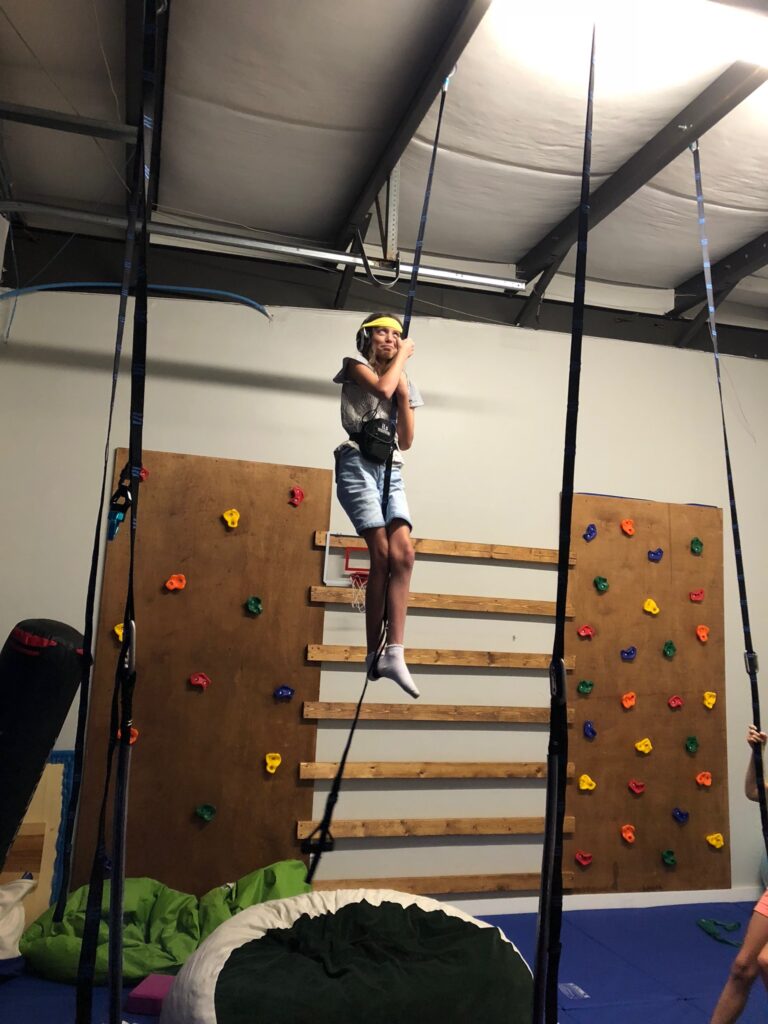What is the Proprioceptive System?
Proprioceptive processing refers to information that comes from the muscles, joints and bones. These receptors from our muscles and joints inform us of our positions, give us body awareness and provide information on how we are moving -innately. Proprioceptive input combines with the other sensory systems to contribute to postural reactions, eye movements, level of arousal, muscle tone and the coordination of both sides of the body. This is important as it provides the person with information on how far to reach, how much pressure, where we are in space, and what our body scheme is. It’s the reason we’re able to move freely without consciously thinking about our environment. Examples of proprioception include being able to walk or kick without looking at your feet or being able touch your nose with your eyes closed.
How do I know if my child has deficits in Proprioceptive Processing?
If your child has…
- Balance difficulties- having trouble standing on one foot or frequent falls while walking or sitting
- Uncoordinated movements- not being able to walk in a straight line
- Clumsiness- falling, dropping or bumping into things
- Poor postural control- slouching or having to place extra weight on a table for balance while sitting
- Trouble recognizing your own strength - pressing on a pen too hard when writing or not being able to gauge the force needed to pick something up
- Avoidance of certain movements or activities - climbing stairs or walking on uneven surfaces because of a fear of falling
How can Occupational Therapy help with Proprioceptive Processing?
At Mount Pleasant Pediatric Therapy, our occupational therapists are skilled in evaluative and treatment techniques in the sensory integration approach. An occupational therapist will complete an extensive evaluation of all your child’s sensory systems and how they collectively impact your child’s participation in daily life at home and in the community. Proprioceptive activities involve providing intensive input to the muscles and joints and may include weight bearing, resistance activities, heavy lifting, oral activities and deep pressure. Providing proprioceptive activities can enhance a child’s ability to achieve a calm and alert state, which improves emotional wellbeing, and the ability to engage and learn. Your occupational therapist will work with you to create an individualized treatment plan utilizing proprioceptive input in conjunction with a variety of sensory input to help your child reach their best success in their environment.

What happens when there are problems with Proprioceptive Processing? .
The inability to process proprioceptive input can lead to poor body awareness, a child having difficulty calming and increased seeking movement with their body. Poor body awareness impacts a child’s ability to understand how their body is moving in relation to itself, affecting the ability to motor plan novel movements. This can lead to them constantly bumping into things, avoiding learning new tasks and having difficulty keeping up with their peers. It can also lead to a child constantly seeking movement even to the point of taking significant safety risks in order to get their sensory needs met through jumping, crashing and climbing. The inability to control their bodies can lead to frequent tantrums, crying episodes, and increased emotions as well as constantly seeking movement to their body or being "on the go."
How do I know if my child is seeking proprioceptive input?
Many children seek proprioceptive input in order to regulate their emotional and behavioral state.
Symptoms of proprioceptive input seeking may include:
- Biting/chewing on objects
- Hyperextending joints - bending back fingers, locking knee joints
- Banging body parts - bangs hands together, bangs jaw with hand
- Holding objects with excessive pressure - writing with increased pressure on page
- Enjoy rough play but can be excessively rough with others
- Throwing self onto floor
- Prefer to run, jump when he/she should be walking
- Engaging in weight bearing activities- swinging, crashing, climbing
- Walking on tiptoes
